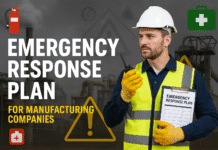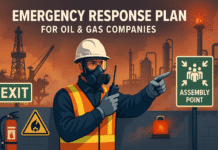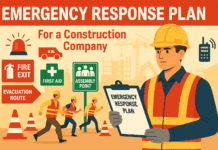
Laser Safety: Ensuring Protection with Protective Eyewear and Control Measures
Introduction
The use of lasers has become integral across various industries, from healthcare to manufacturing. While lasers offer numerous benefits, they also pose potential risks to human eyes and skin. This article explores the importance of laser safety, focusing on the role of protective eyewear and control measures to ensure a secure working environment.
Understanding Laser Hazards
- Types of Lasers
- Classifications: Lasers are classified into different categories based on their potential for harm.
- High-Powered Lasers: Class 3B and Class 4 lasers are particularly hazardous and require strict safety measures.
- Potential Health Risks
- Eye Damage: Exposure to laser beams can cause eye injuries, ranging from temporary discomfort to permanent vision loss.
- Skin Burns: High-powered lasers can also cause burns to the skin upon direct contact.
- Wavelength Specific Dangers
- Different Wavelengths: Various lasers emit light at different wavelengths, each carrying specific risks.
- Infrared Lasers: Infrared lasers, though invisible, can cause severe eye damage without immediate awareness.
Importance of Protective Eyewear
- Selecting Appropriate Eyewear
- Wavelength Specificity: Protective eyewear must match the laser’s wavelength to provide effective protection.
- Optical Density: The optical density of eyewear indicates its ability to reduce the intensity of laser light.
- Eyewear for Different Laser Classes
- Class 2 and 3R Lasers: Safety glasses with specific optical filters may be sufficient.
- Class 3B and 4 Lasers: Higher-powered lasers demand more robust eyewear with increased optical density.
- Proper Fit and Comfort
- Secure Fit: Eyewear should fit securely to prevent any gaps that could allow laser light to reach the eyes.
- Comfort Considerations: Comfortable eyewear encourages consistent use, ensuring ongoing protection.
Control Measures for Laser Safety
- Administrative Controls
- Training Programs: Comprehensive training on laser safety protocols for all personnel.
- Authorized Personnel: Restrict access to laser-operating areas to trained and authorized individuals.
- Engineering Controls
- Enclosures and Barriers: Implement physical barriers to contain laser beams.
- Interlock Systems: Automatic shut-off systems triggered by breaches in safety protocols.
- Warning Signage and Labels
- Clear Signage: Place warning signs indicating laser-operating areas.
- Labeling Lasers: Clearly label lasers with their classification, wavelength, and potential hazards.
- Emergency Response Protocols
- Emergency Shut-off Procedures: Clearly outline procedures for shutting off lasers in case of emergencies.
- First Aid Training: Equip personnel with first aid training specific to laser injuries.
Regular Maintenance and Inspections
- Equipment Inspections
- Scheduled Checks: Regularly inspect laser equipment for any signs of wear or malfunction.
- Calibration Verification: Ensure laser systems are correctly calibrated to maintain predictable outcomes.
- Eyewear Inspections
- Regular Assessments: Periodically assess the condition of protective eyewear.
- Replacement Policies: Establish clear guidelines for the replacement of damaged or outdated eyewear.
Creating a Culture of Laser Safety
- Safety Awareness Programs
- Regular Updates: Keep personnel informed about the latest laser safety guidelines.
- Reporting Mechanisms: Establish channels for reporting safety concerns or incidents.
- Recognition and Rewards
- Acknowledging Compliance: Recognize and reward individuals or teams for exemplary adherence to laser safety protocols.
- Incentives for Innovation: Encourage the development of innovative safety solutions.
- Continuous Improvement
- Feedback Mechanisms: Encourage feedback on existing safety measures.
- Regular Reviews: Conduct periodic reviews to identify areas for improvement.
Conclusion
Laser safety is paramount in environments where lasers are utilized, and protective eyewear plays a crucial role in mitigating potential hazards. By implementing stringent control measures, ensuring proper fit and usage of protective eyewear, and fostering a culture of safety, organizations can create work environments where the benefits of lasers are harnessed responsibly and the well-being of personnel is prioritized.
Safety Training Program Evaluation: Measuring Effectiveness and Impact
Psychosocial Risk Assessment in the Workplace: Addressing Mental Health Concerns
Root Cause Analysis (RCA): Identifying and Addressing Underlying Causes of Safety Incidents
Risk Assessment and Hazard Identification: A Key Responsibility for Safety Officers
Personal Protective Equipment (PPE): Selection, Usage, and Maintenance for Safety Officers
Frequently Asked Questions (FAQs)
- What are the potential health risks of lasers in the workplace?
- Lasers in the workplace can pose risks such as eye damage, skin burns, and other injuries depending on the laser’s classification and wavelength.
- How do you select appropriate protective eyewear for lasers?
- Protective eyewear should match the laser’s wavelength and have the appropriate optical density. The eyewear selection varies for different laser classes.
- What are some control measures for laser safety?
- Control measures include administrative controls like training programs, engineering controls like enclosures, warning signage, emergency response protocols, and regular maintenance and inspections of equipment and eyewear.
- How can organizations create a culture of laser safety?
- Organizations can create a culture of laser safety through safety awareness programs, recognition and rewards for compliance, and a commitment to continuous improvement with feedback mechanisms and regular reviews.
























